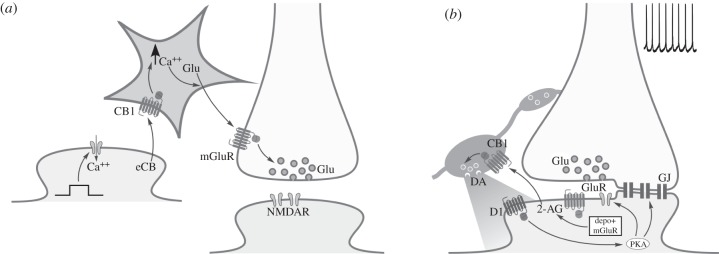Figure 2.
Specializations of eCB activity at the circuit level. (a) Astrocytes modulate interneuronal synaptic communication in an eCB-dependent manner. Depolarization of the postsynaptic neuron (left) promotes synthesis and release of eCBs, which in turn activate astrocytic CB1 receptors resulting in increased intracellular Ca++ levels. This stimulates glutamate release from the astrocyte, which then activates presynaptic neuronal mGluRs, enhancing glutamate release. (b) Activity-dependent long-term potentiation of electrical and chemical synaptic transmission mediated by eCBs. At mixed chemical and electrical synapses in the goldfish Mauthner cell, synaptic activity results in postsynaptic depolarization via electrical synapses and in mGluR activation. Both are required to evoke synthesis and release of 2-AG, which activates CB1 receptors on nearby dopaminergic varicosities, resulting in increased availability of DA. Subsequent activation of postsynaptic D1 receptors increases PKA activity, modulating ionotropic glutamate receptors and gap junction proteins (GJ), and resulting in a long-term enhancement of electrical and chemical synaptic transmission.

